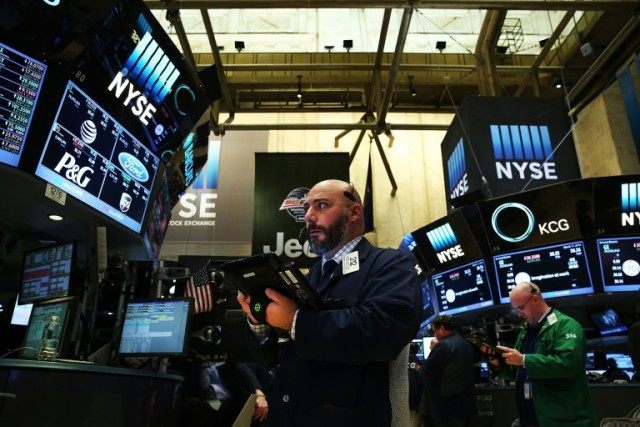The Dow Jones Industrial Average fell Monday for the eighth day in row, achieving the longest streak of losing days since 2011.
That sounds a lot scarier than it is. While stocks were down significantly early in the day, they quickly rebounded. The Dow closed down just 0.2% Monday. The broader S&P 500 fell just 0.1%. The tech-stock heavy Nasdaq Composite actually rose 0.2%.
In total, the eight day selloff has brought the Dow down by just 1.9%. The last time stocks fell for eight days in a row, the Dow declined by 6.7%. Previous instances of 8 day declines typically recorded even steeper declines.
If this is what a selloff looks like in the Trump era, stock market bulls are going to be very happy. It’s probably best to look at this not as a selloff but as a holding pattern as investors try to assess the prospects for the economic growth policies that helped elect Donald Trump. Or perhaps investors just need a breather after the massive post-election rally that pushed stocks up to record levels.
Despite the scary headlines about the “longest losing streak,” it’s the markets resilience that is truly remarkable. Many analysts and talkative investor-types had insisted the market would view the Obamacare replacement bill as a test of the Trump administration’s ability to enact its agenda. So when the bill seemed to be in trouble last week and, especially, when it went down in flames on Friday, stocks were widely expected sell off steeply. But that just keeps not happening.
The question on everyone’s lips on Wall Street today is simply: why not? What went wrong with the analysis?
No doubt part of the explanation is that Trump administration’s efforts to assure markets that its policy priorities remain intact have worked. Republican leaders on Capitol Hill have even begun signaling that they may be willing to accept tax reform that is not strictly “deficit neutral”–an appropriately anodyne term for Washington, D.C.’s fetish for fighting any changes to the federal budget that tilts the mix of government funding toward debt and rather than taxes. That has reassured many that tax cuts and infrastructure spending can be achieved regardless of what the green-eye shade-types in the Congressional Budget Office say.
Probably most importantly, there are no signs that the budding economic growth that has underpinned the post-election market rally is stalling.

COMMENTS
Please let us know if you're having issues with commenting.